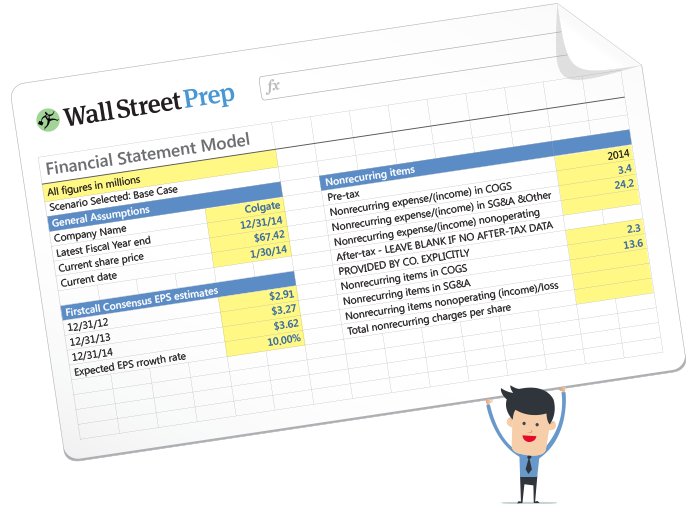- What is Customer Concentration?
- How to Measure Customer Concentration Risk
- What are the Characteristics of Customer Concentration Risk
- How to Calculate Customer Concentration Risk
- Customer Concentration Formula
- How to Mitigate Customer Concentration Risk
- Customer Concentration Calculator — Excel Template
- SaaS Customer Concentration Calculation Example
What is Customer Concentration?
Customer Concentration refers to the risk attributable to a company’s revenue being too reliant on a small subset of customers.
Simply put, customer concentration risk stems from the potential loss of a customer that contributes a significant proportion of a company’s total revenue.

How to Measure Customer Concentration Risk
Customer concentration risk arises when a business is over-reliant on a few customers for a large portion of its revenue.
Given the revenue concentration, the potential of losing one of the top customers is a material risk to the longevity and sustainability of a company.
In effect, the loss of a single key customer—or customer churn—can adversely impact the company’s revenue growth, profitability, and overall operating performance.
A company with high customer concentration risk is vulnerable because its revenue model and long-term financial stability depend significantly on a few customers.
If the top customers recognize that they hold leverage over the company, that could cause unfavorable negotiations and operational risks to the provider of the good or service.
Therefore, customer concentration risk must be closely monitored and kept at a manageable level, or else all stakeholders are placed at risk.
What are the Characteristics of Customer Concentration Risk
Companies with high customer concentration risk exhibit the following characteristics:
| Risk Factor | Description |
|---|---|
| Revenue Volatility |
|
| Bargaining Power |
|
| Operational Risk |
|
| Market Perception |
|
How to Calculate Customer Concentration Risk
Customer concentration risk can be measured by the percentage of total revenue attributed to the top customers.
The steps to calculate customer concentration risk are as follows:
- Step 1 ➝ Determine the Revenue Contribution per Customer
- Step 2 ➝ Divide the Revenue Contribution per Customer by Total Revenue
- Step 3 ➝ Convert the Output from Decimal Notation to Percentage Form (Multiply by 100)
- Step 4 ➝ Perform Sensitivity Analysis (i.e., Impact on Revenue from the Loss of a Customer)
Customer Concentration Formula
The formula to calculate customer concentration equals the revenue contribution per customer divided by the total revenue in a given period, expressed as a percentage.
As a general rule of thumb, a customer that contributes more than 10% of total revenue, or the top five customers contributing more than 25%, are deemed potential red flags.
However, the specifics of the customer relationships will determine the materiality of the risk, including the industry in which the company operates.
How to Mitigate Customer Concentration Risk
To mitigate customer concentration risk, companies can employ several strategies:
- Diversification of Customer Base ➝ Expanding the customer base reduces reliance on a few key clients through targeted marketing, exploring new markets, and developing new products or services.
- Strengthening Relationships ➝ Building strong, long-term relationships with existing customers increases loyalty and reduces the risk of sudden revenue loss.
- Contractual Safeguards ➝ Establishing long-term contracts with key customers provides revenue stability and reduces the risk of sudden customer loss.
- Liquidity ➝ Maintaining healthy cash reserves and diversifying income streams helps buffer against the financial impact of losing a major customer (i.e. “cushion” against periods of underperformance).
- Risk Management Practices ➝ Periodically monitoring customer concentration risk and implementing contingency plans prepares the company for potential disruption (e.g. new market entrants).
Customer Concentration Calculator — Excel Template
SaaS Customer Concentration Calculation Example
Suppose a private equity firm considering a leveraged buyout (LBO) of an enterprise SaaS company with $200 million in annual recurring revenue (ARR) must assess the stability of its top customers.
Customer concentration is a critical risk factor closely considered in the private equity due diligence process, with the potential to dictate the investment decision (i.e. pass on the investment opportunity if the risk is deemed too high).
The ARR contribution per customer is as follows:
ARR Contribution — Top Five Customers
- Customer A = $12 million
- Customer B = $10 million
- Customer C = $8 million
- Customer D = $6 million
- Customer E = $4 million
Therefore, the ARR contribution that stems from the top five customer base is $40 million, implying that 20% of the company’s total ARR is concentrated on those five customers.
- Customer Concentration (%) = $40 million ÷ $200 million = 20%
If 20% of the total revenue comes from five major clients, the loss of these clients can significantly impact ARR.
In particular, Customer A’s ARR constituted 6% of the total ARR, so that specific relationship must be analyzed in-depth to determine the riskiness.
- Customer A Concentration Risk (%) = $12 million ÷ $200 million = 6.0%
With regard to practical measures to mitigate risk, the SaaS business can secure long-term agreements and diversify its customer base to maintain revenue stability (and reduce concentration risk).
- Long-Term Contracts ➝ By locking in multi-year contracts with key customers, the SaaS company can ensure predictable revenue for the time being, including opportunities for upselling, cross-selling, and product bundling.
- Market Expansion ➝ By entering new markets and attracting new customers through strategic alliances and partnerships, the SaaS company can further establish its branding and expand its reach to different end markets.
- Operational Efficiency ➝ The implementation of lean management practices (e.g. cost-cutting initiatives), optimizing supply chains, negotiating favorable terms with suppliers or vendors, and leveraging technology to reduce costs and improve financial resilience can help improve profitability.
By addressing customer concentration risk, the company enhances its stability and growth potential, making it a more attractive candidate for LBO investment and positioning it for long-term success.







